I was thinking yesterday about my approach to things… art, life, work… pretty much everything. You could probably sum it all up as “science in service of art”. Art is the goal, but fuzzy-wuzzy inspiration and a good dose of trial and error can only get you so far. The science is necessary as well, although that contradicts the modern “artiste” stereotype.
Take my current dyeing project. The goal: to produce the colors I envision, reliably and consistently. It doesn’t much matter if I make the perfect green once if I can never do it again. But if I put a bit of work into it, then I can make the perfect green, or blue, or orange over and over, any time I want. “But all that math and planning and organization spoils my muse”, I hear you cry. Well, that’s fine – your time is your own. This is a hobby, after all. If it’s all about the doing for you, and not the done, then it may not matter. If you are the kind of knitter, for example, who would rather frog a piece over and over than do the math at the beginning to understand how a piece will come out, then you might not need science working for you.
Me, I gotta understand it. How does it work, what happens if, when I do this how does that happen? I got result X once, what do I do to get it again most efficiently? Yes, there’s lots of work up front, and much thought time and experimentation, but once I’m done, once I’ve “got it” then I can do it again, over and over. More importantly, I can teach it, whatever it is, with clear directions and without lots of handwaving. It’s the difference between following someone else’s pattern and designing your own. And knowing that it will work because you understand what you are doing.
But here’s the part that most people don’t know: it works the other way around, too. For those readers who don’t know me (and I know there are at least two! how cool is that!), I’m a full-time research scientist. There too, science serves art. You see, science is a highly creative process. But here it’s even more crucial that you do the work and develop the understanding so that you can make that leap and recreate the colors you see in your mind. Or whatever else it is that you envision doing – I really don’t want to talk about my actual job here. But it’s not all math and statistics and drudgery; there really is that moment of inspiration. And if you don’t have the deep understanding of your field, that moment of inspiration will escape and you’ll never get there because you don’t know how. Worse, you may never get the inspiration at all.
But you just have to do the pain-in-the-ass stuff first, no matter what it is, and then you have your moment of inspiration, and then there’s always some more PITA stuff on your way to getting there… but if you did the work and your understanding was correct, then you GET YOUR INSPIRATION. And there’s nothing better.
So, the PITA stuff… preparing for some dye experiments. (Unless you’d rather hear about the PITA excursions into nonparametric statistics? Didn’t think so.) I’m using acid dyes, so silk and wool. (MMMMM, silk!) I put together a small sample set of wool and silk (and the same leftover silk-rayon blend that I did the lace swatch with because I have a mental image to match). Here: 1g of protein fibers.
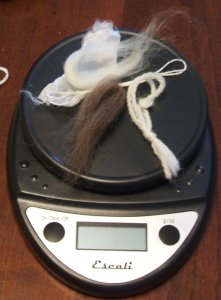
Yes, wool roving in two colors (what does happen if you try to dye brown wool, anyway?), a bit of wool yarn, and a piece of silk, and the silk blend. I know that different kinds of wool take dye a bit differently, but I don’t think it matters as much with silk so there’s only one piece of scrap silk fabric.
I also got all the stock solutions measured, after some unanticipated and undesired canine assistance. (After which I shut him out of the basement bathroom, since shutting him out of the basement failed completely.)
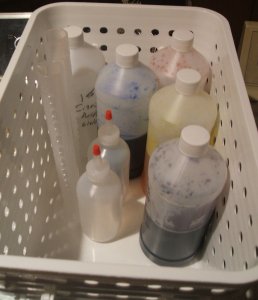
Labels, graduated cylinders, percentages… all part of the science. (Note to self – must get 0.1g scale! Stock solutions not very accurate.)
I scoured the silk, washed the wool, and it is all soaking in water & a drop or two of Synthrapol as a wetting agent. (Careful preparation, also part of the science. But one of the benefits of understanding what you are doing is knowing when you can skip it!) Next: dyeing 30-something little samples all different colors.
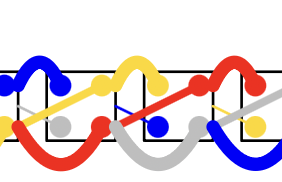

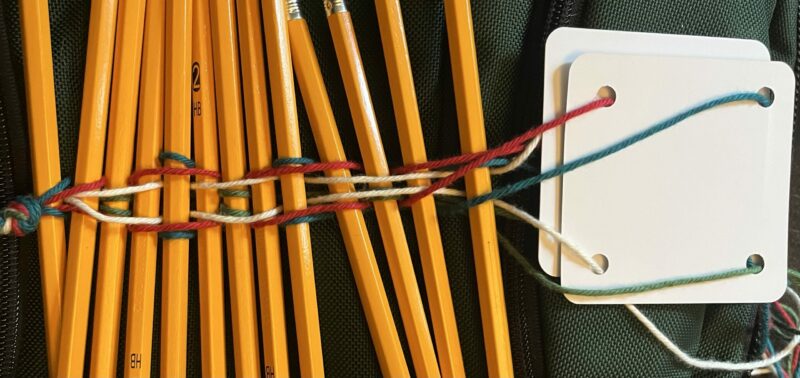
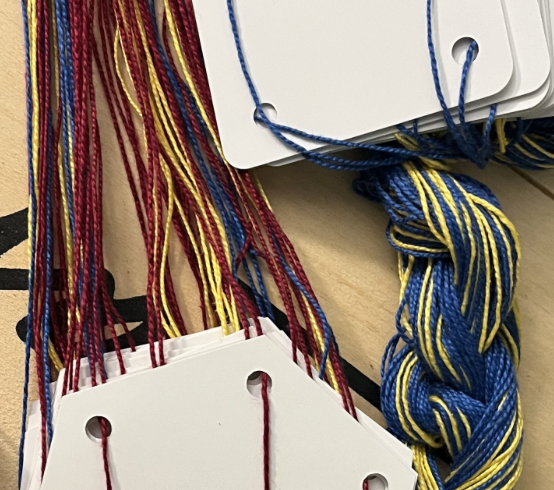

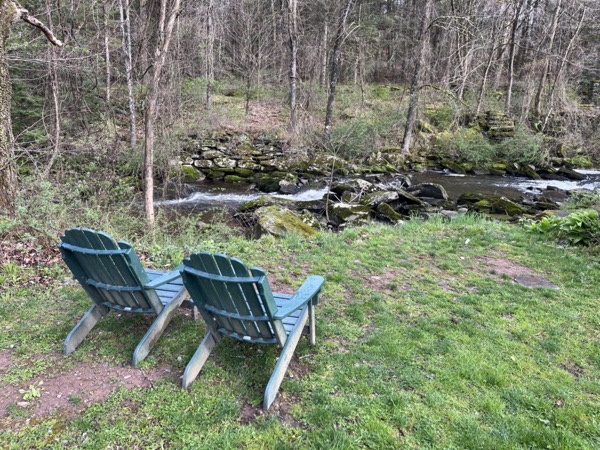
One response to “Getting ready to dye…”
Hi! I missed the last few installments, so I’m catching up before I’m out of town…
Regarding PITA scientific preparation & understanding: having involuntarily undergone similar tooth-gnashing persnickety processes, I can attest to the value of such experimentation. You learn how to do it, you have a basis for predicting future results, and you appreciate NOT weighing/measuring a lot more afterwards!
About dyeing brown wool–Mummies of Urumchi by Barber–she couldn’t figure out how one color was produced by a particular dyestuff until she discovered ethnographic evidence that it had been used on brown wool.